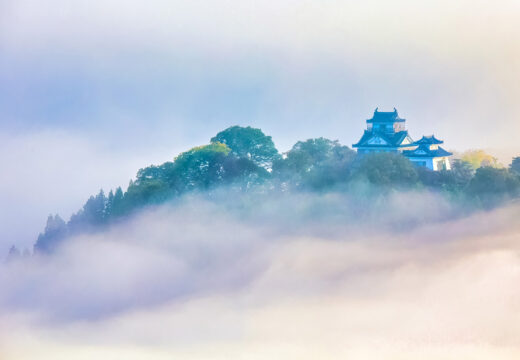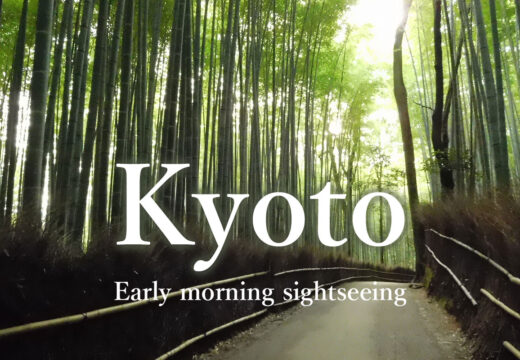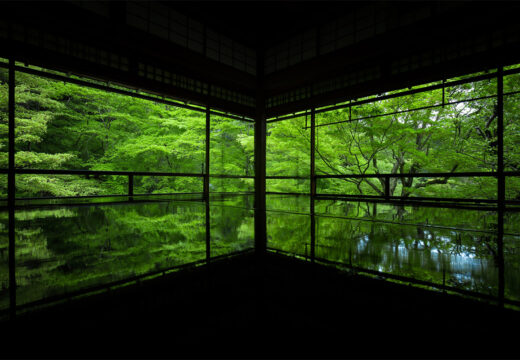Japan Pavilion: Thinking about life through circulation. Expo 2025 Osaka, Kansai Report
Category: Sightseeing
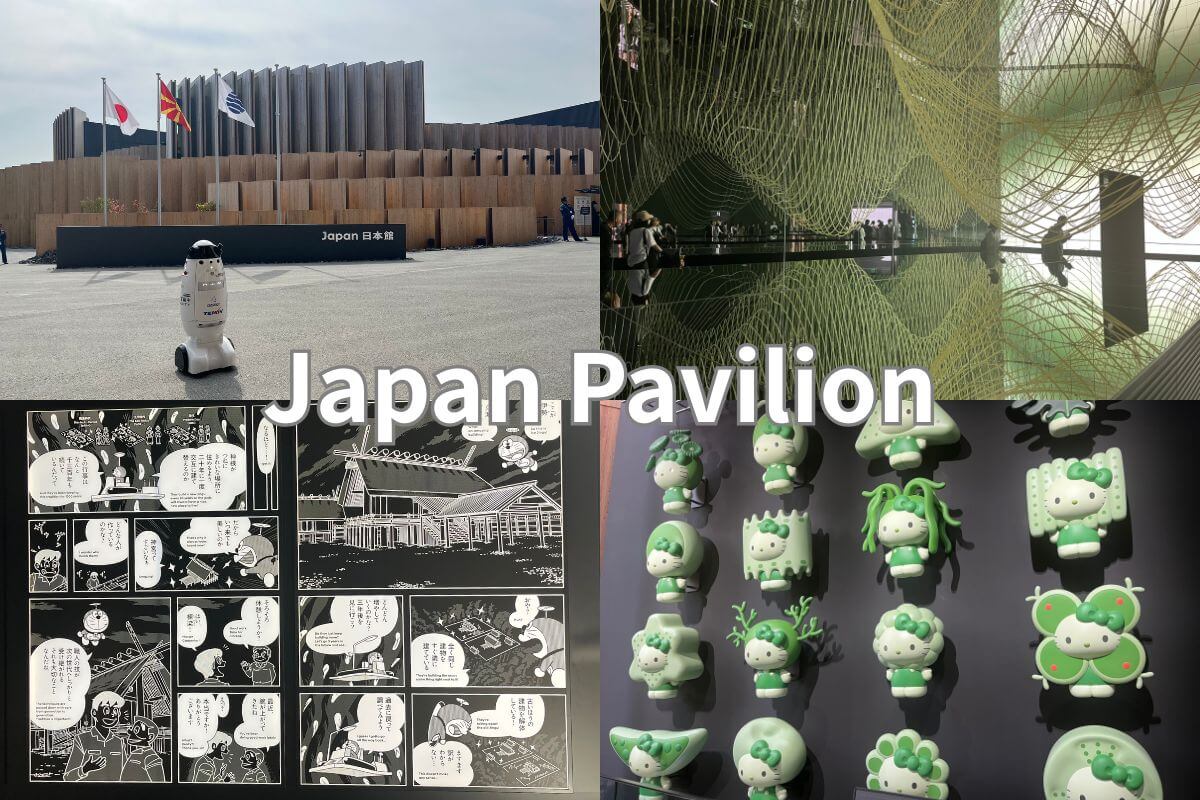
The Expo 2025 Osaka, Kansai is currently being held under the theme of “Designing Future Society for Our Lives.” It is a place where wisdom from around the world comes together to share methods for solving common challenges for humanity.
Kodawari Times has visited various pavilions to learn about the initiatives and technologies of each country. This time, we were finally able to visit our country’s pavilion, the Japan Pavilion, so we will bring you a full report on the pavilion’s theme and highlights.
What is the Japan Pavilion?
The Japan Pavilion is the pavilion exhibited by the Japanese government, the host country of the Expo 2025 Osaka, Kansai. It is located in the East Gate Zone, outside the Great Roof Ring.
Based on the theme of “Between Lives,” the “cycle” of life is embodied in each exhibit and building, including displays of a biogas plant and microorganisms and algae.
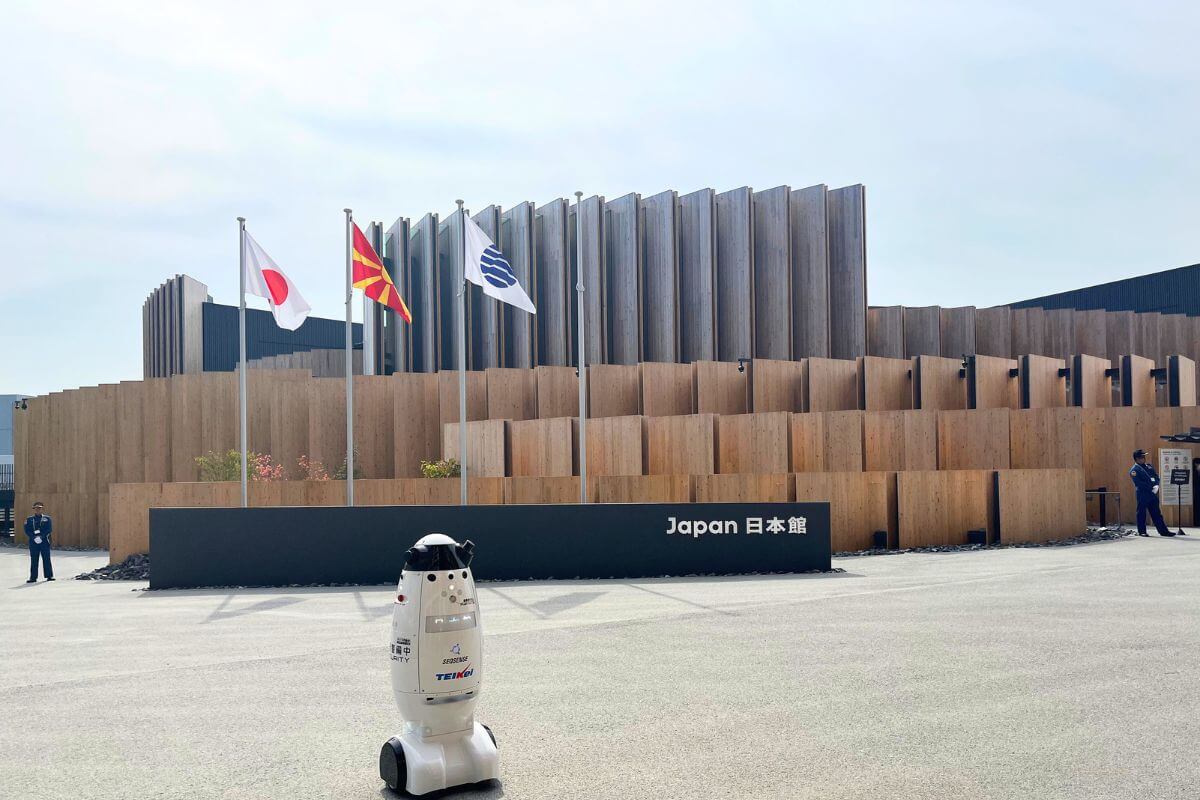
The impressive circular building contains three exhibition areas: the Plant Area, the Farm Area, and the Factory Area.
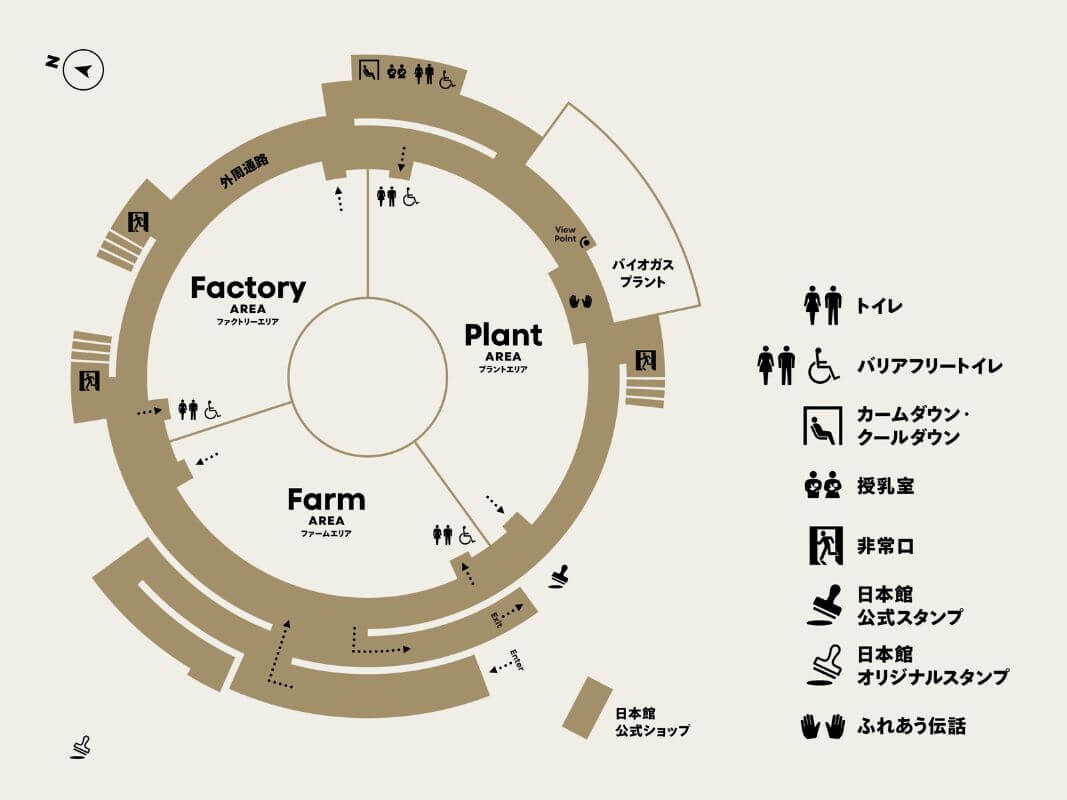
Provided by: Ministry of Economy, Trade and Industry
The wooden architecture, which is so characteristic of Japan, uses a type of wood called Cross-Laminated Timber (CLT), which is scheduled to be reused by companies and local governments after the Expo closes. The square boards have been used with minimal processing, and no varnish or coatings have been applied to the surface.
This means that once the building materials have completed their role at the Japan Pavilion, they will be breathed new life into a new location.
The Japan Pavilion is a place where you can take a close look at the host country’s response to the Expo’s theme, “Designing Future Society for Our Lives,” from the perspective of recycling. So, let’s go on a journey through recycling.
Plant Area : From garbage to water
This area displays how food waste is broken down by microorganisms to produce electricity and clean water. Various items based on the waste generated at the Expo site are transported along a giant conveyor belt.

After passing through the path of light that represents the transformation of waste into resources, you will come to a beautiful area where countless lights shine. If you look closely at the bottom of the light, you will see 37 huge tanks. These are modeled after fermentation tanks that decompose food waste, and the dazzling particles of light are said to represent the workings of microorganisms.

You can see the tanks actually in operation at the Japan Pavilion at the Biogas Plant, located on the Japan Pavilion grounds. Here, food waste generated at the Expo site is collected and decomposed into water, biogas, and other waste using the power of microorganisms. What’s more, the electricity generated from the biogas is used as part of the Japan Pavilion’s power grid.
As the pavilion is praised as the “Japan pavilion that eats waste,” you can see firsthand how waste is recycled into resources. Be sure to check it out.
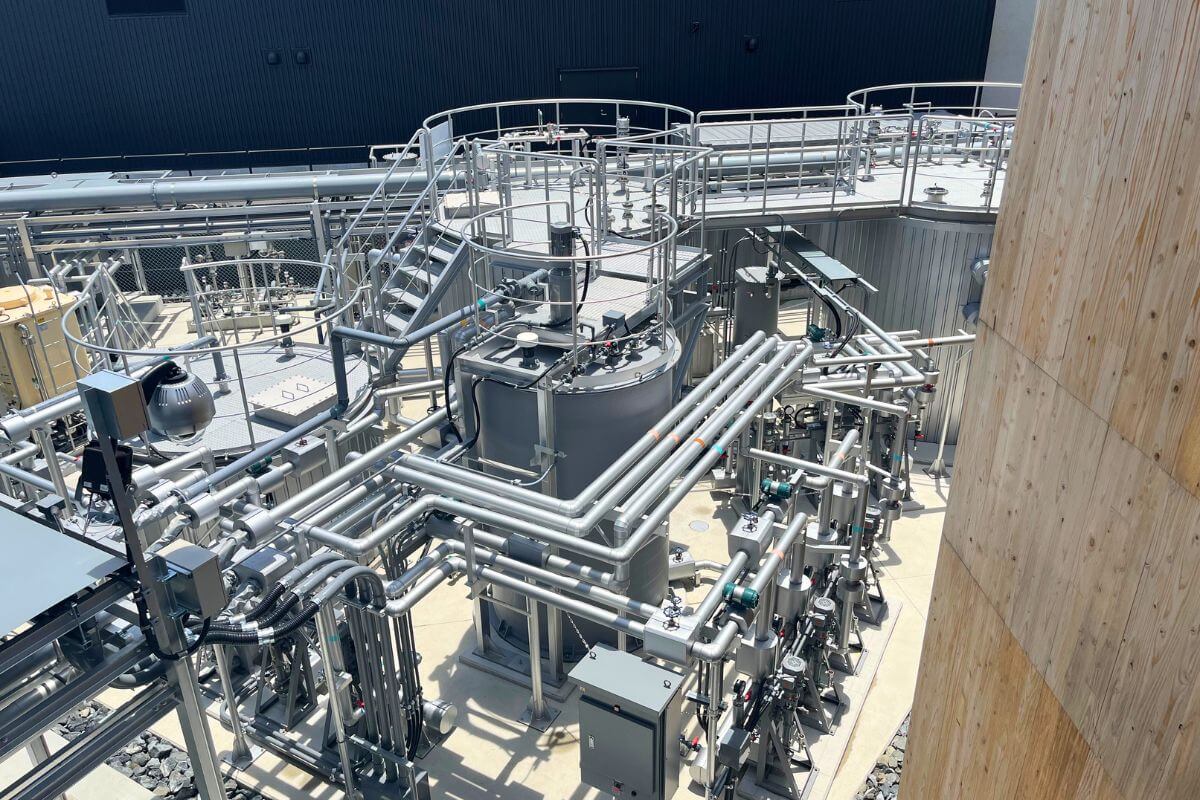
The next booth in the Plant Area features art that depicts koji mold, a microorganism essential for Japanese fermented foods such as soy sauce and miso, as well as sake brewing, in the shape of a sparkler. Even though it’s normally invisible, seeing its shape like this makes you feel somehow endeared and charmed.
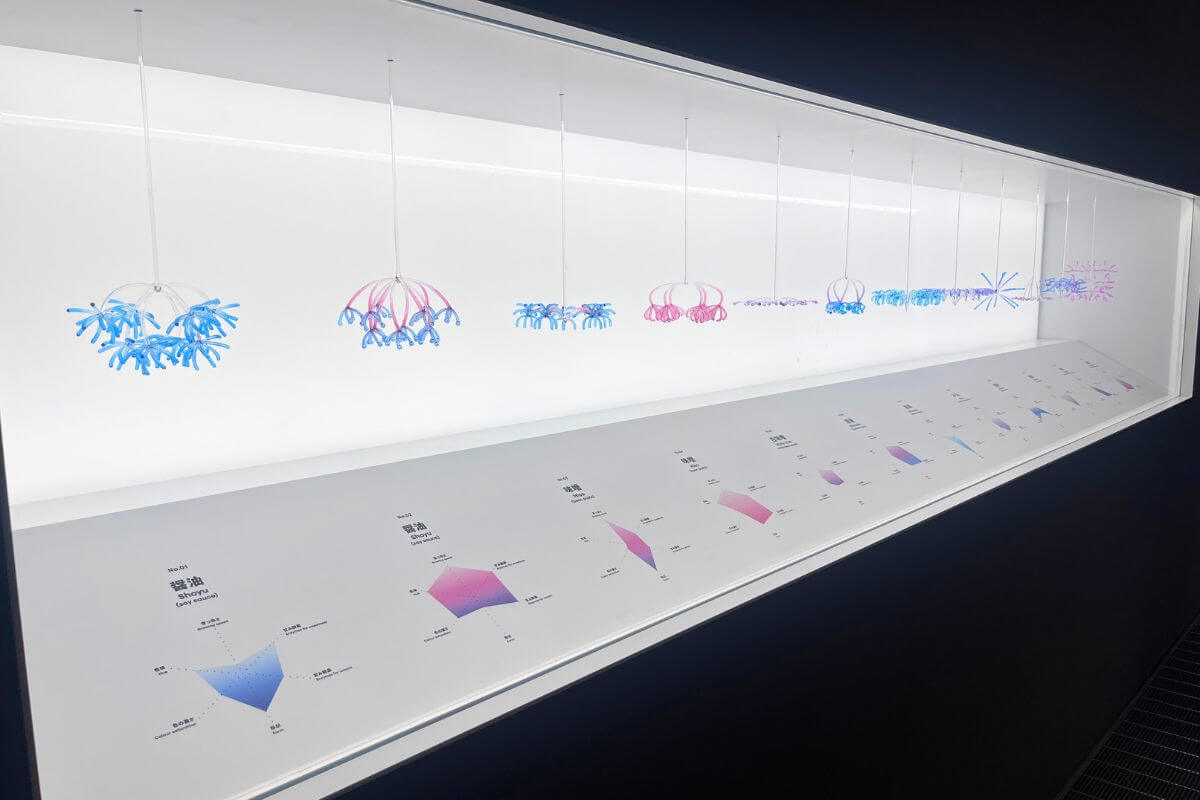
This is biodegradable plastic, which can be broken down by microorganisms and returned to nature. The decomposition of the container is expressed through the use of cherry blossom carvings, making it a beautiful yet fleeting piece of art.

It’s a material I’d never heard of before, but it’s actually used in everyday products such as fresh food trays and disposable diapers. It’s environmentally friendly and easy to use, so it’s a material that we can look forward to seeing more use in in the future.
Next, in the centre of the Japan Pavilion, there is a huge basin of water that has been purified using microorganisms and a filtration membrane. The water is so clear and pure it’s hard to believe that such clear water can be produced from waste.
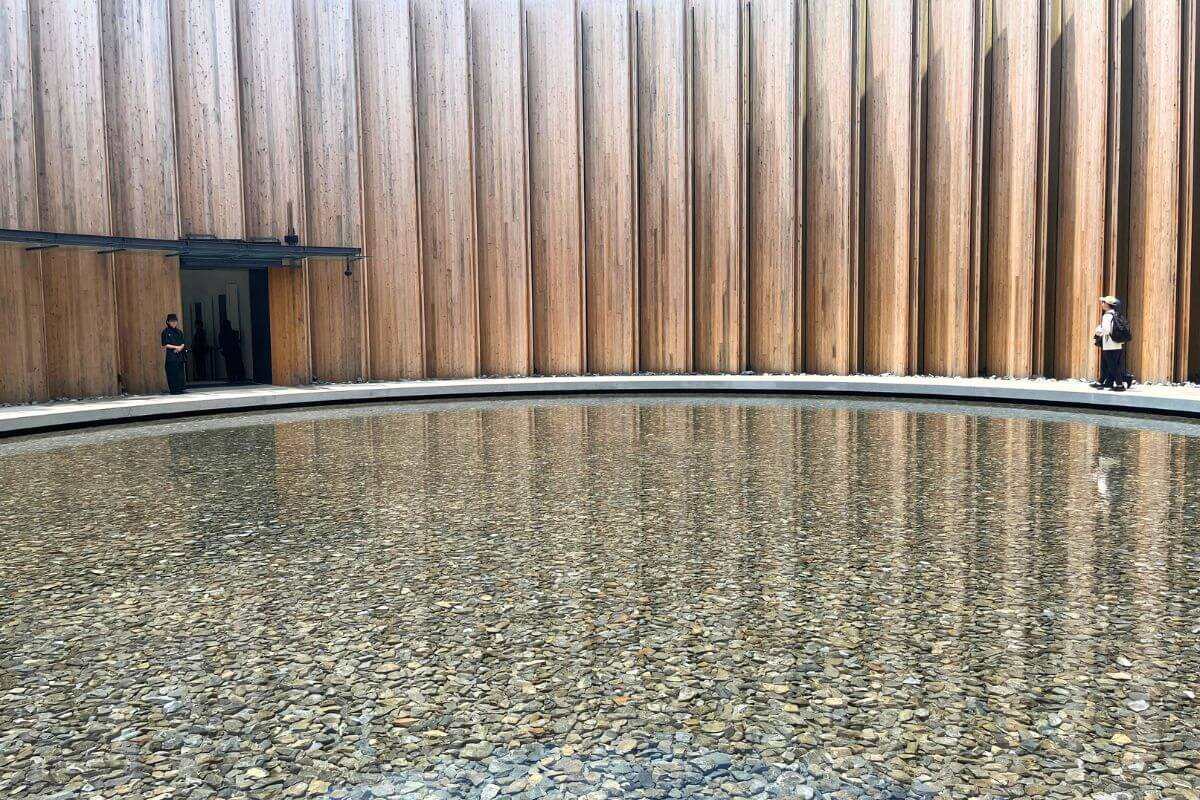
It’s just a space filled with water, but it has a sacred atmosphere that is very calming. Water, the source of all life, seems to mirror the theme of the Japan Pavilion and Japanese spiritual culture.
And at the end of the Plant Area, you can see and touch the “Martian Rocks,” another highlight of the Japan Pavilion. On display are 10 of the world’s largest Martian meteorites and their fragments, discovered in 2000 by a Japanese Antarctic research expedition.
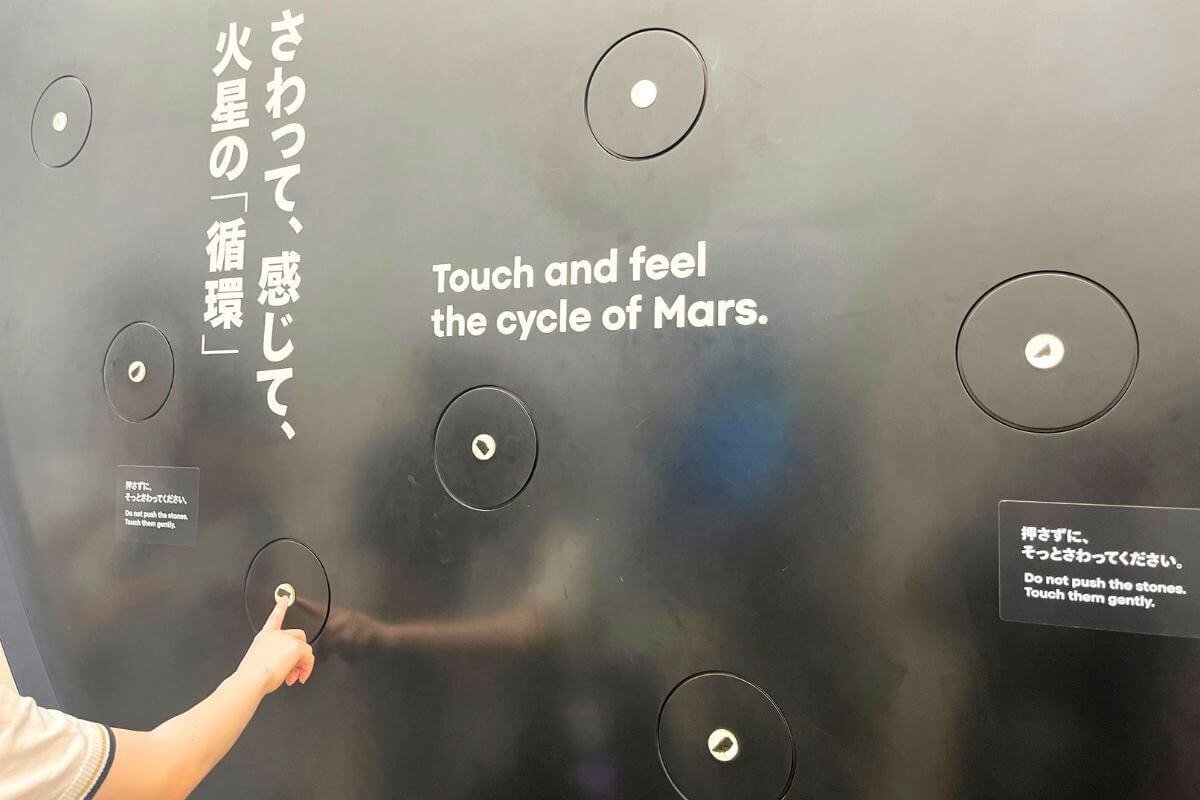
You may be wondering why we’re suddenly seeing Martian rocks. In fact, these Martian rocks contain clay minerals that cannot be formed without water, providing evidence that water once existed on Mars.
Some research has suggested that liquid water exists deep underground on Mars, which raises great questions: was there life on Mars in the past? And could humans be habitable on Mars in the future?
This valuable exhibit, which may shed light on the origins of water and life and provide clues to circulation on a cosmic scale, is a must-see.
Farm Area : From water to ingredients
The second area is the “Farm Area,” where substances and energy such as water, heat, electricity, and CO2 are transformed into new materials.
The CO2 produced as food waste is decomposed by microorganisms is concentrated and bottled in green cylinders.
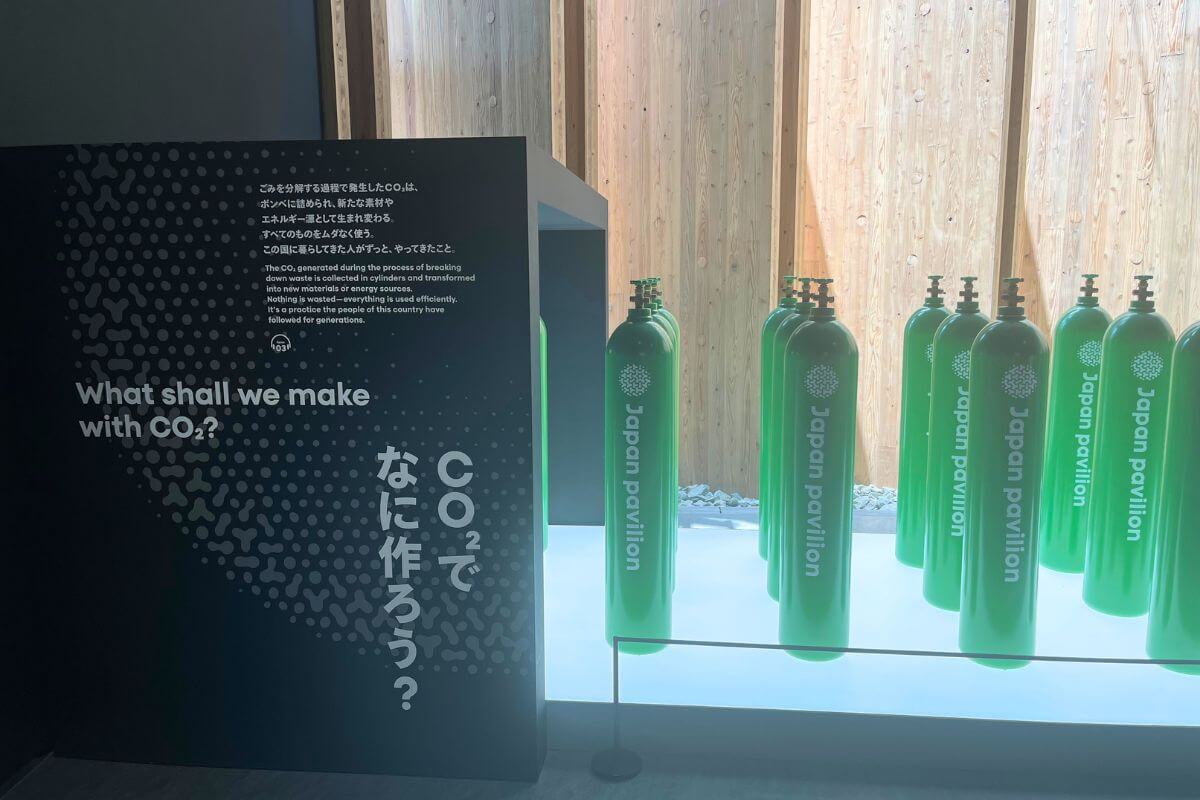
The “biodegradable plastic” vessels exhibited in the Plant Area are made using this CO2 as a raw material. The vessels made from CO2 generated by microorganisms are then returned to nature by the power of the microorganisms, completing a complete recycling cycle.
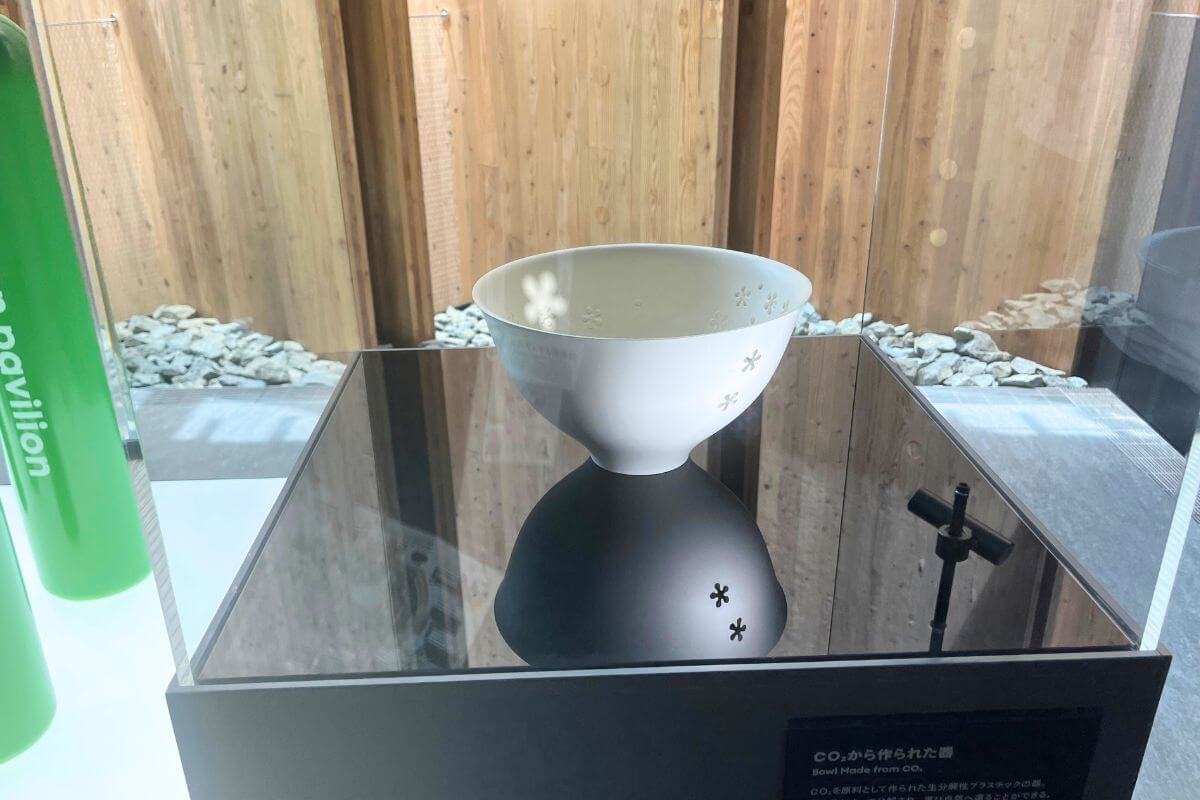
One of the highlights of the Farm Area is the infinitely powerful algae. Algae are photosynthetic organisms other than terrestrial plants that live in water and damp places.
Algae apparently originated approximately 3 billion years ago, long before the birth of mankind! Originally, there was almost no oxygen on Earth, with carbon dioxide making up 90%. It is said that algae that first appeared in the ocean absorbed carbon dioxide and performed photosynthesis over the course of many years, increasing the amount of oxygen in the atmosphere.
In other words, it is no exaggeration to say that without algae, all living things on Earth, including humans who breathe oxygen to survive, would not have come into being.
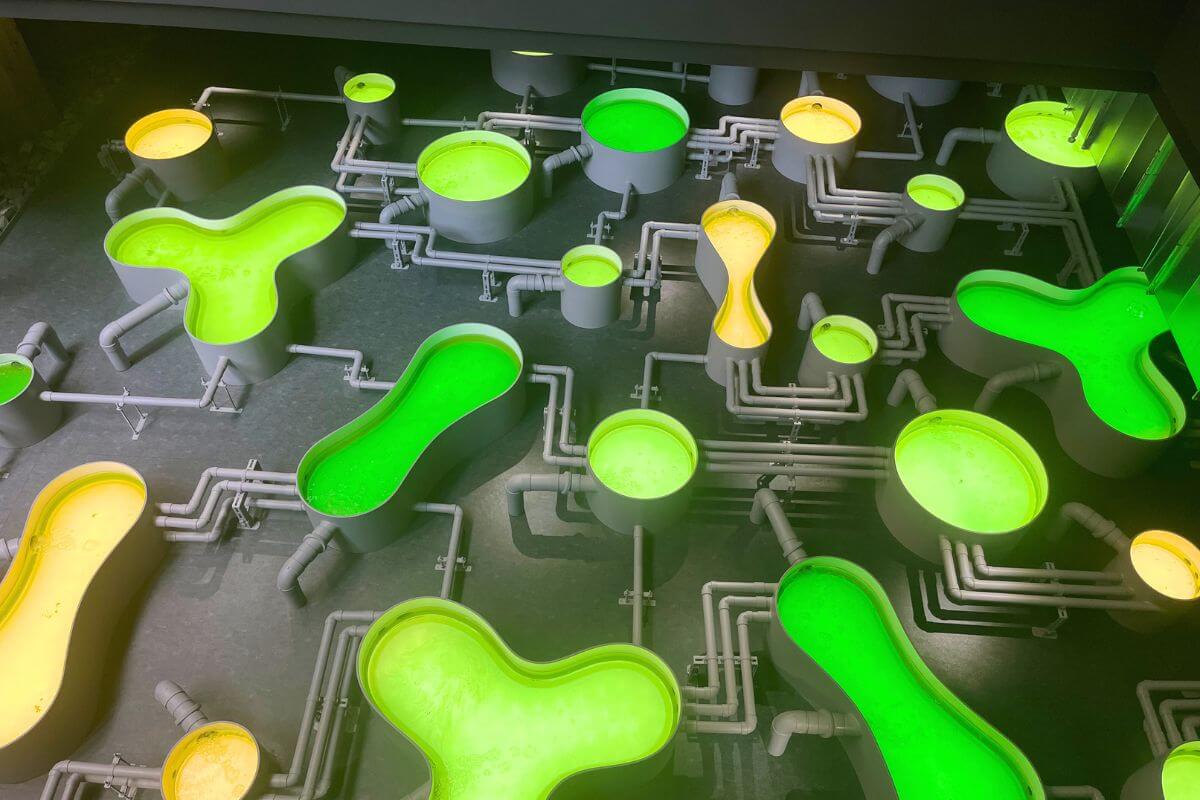
Algae are truly magnificent creatures. In this green tank, a type of green algae called Botryococcus is being cultivated. This algae not only absorbs CO2, but also has the potential to become an alternative energy source to petroleum. It could be a savior that solves environmental problems such as global warming caused by CO2 emissions and the depletion of fossil fuels!
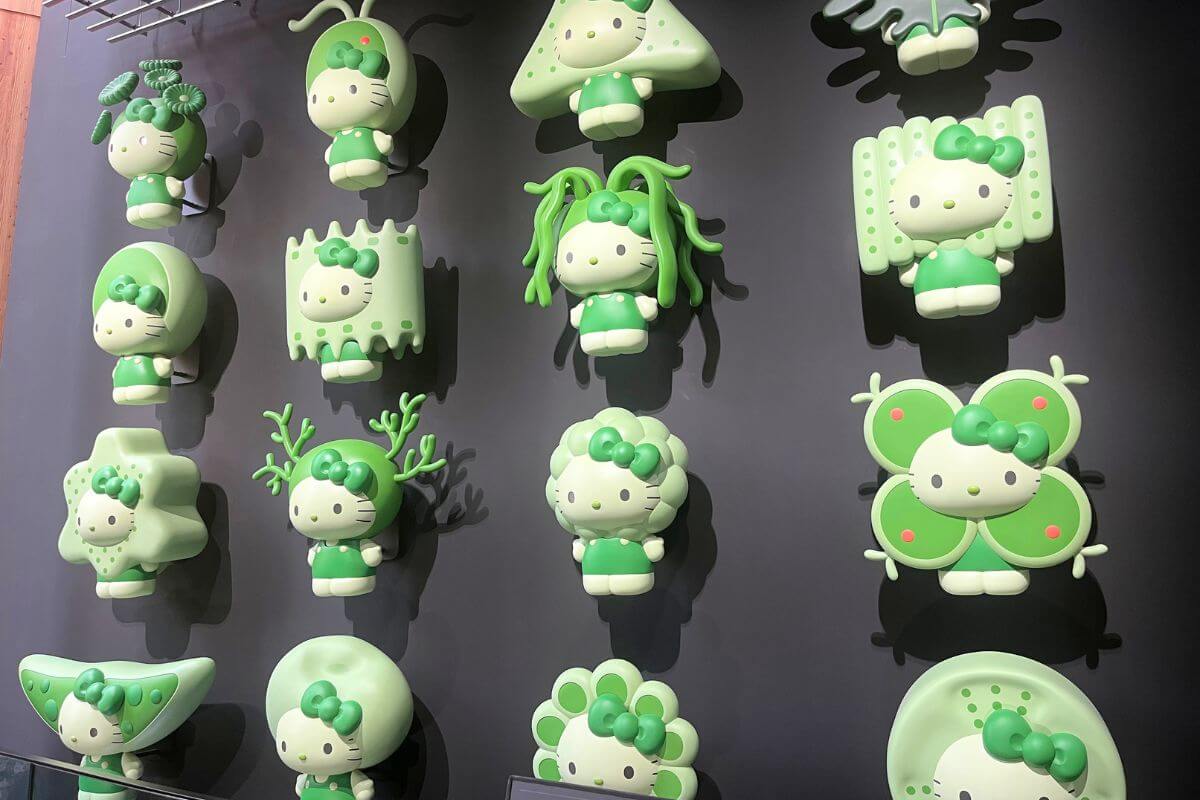

© ’22 SANRIO CO., LTD. APPR. NO. L662115
It is said that there are over 300,000 types of algae living on Earth, ranging from large, visible species such as wakame and hijiki, which are familiar in Japanese cuisine, to tiny, invisible ones measuring just one micrometer.
One of the highlights is the Hello Kitty exhibit, which has been transformed into 32 different types of algae. Be sure to find your favorite.
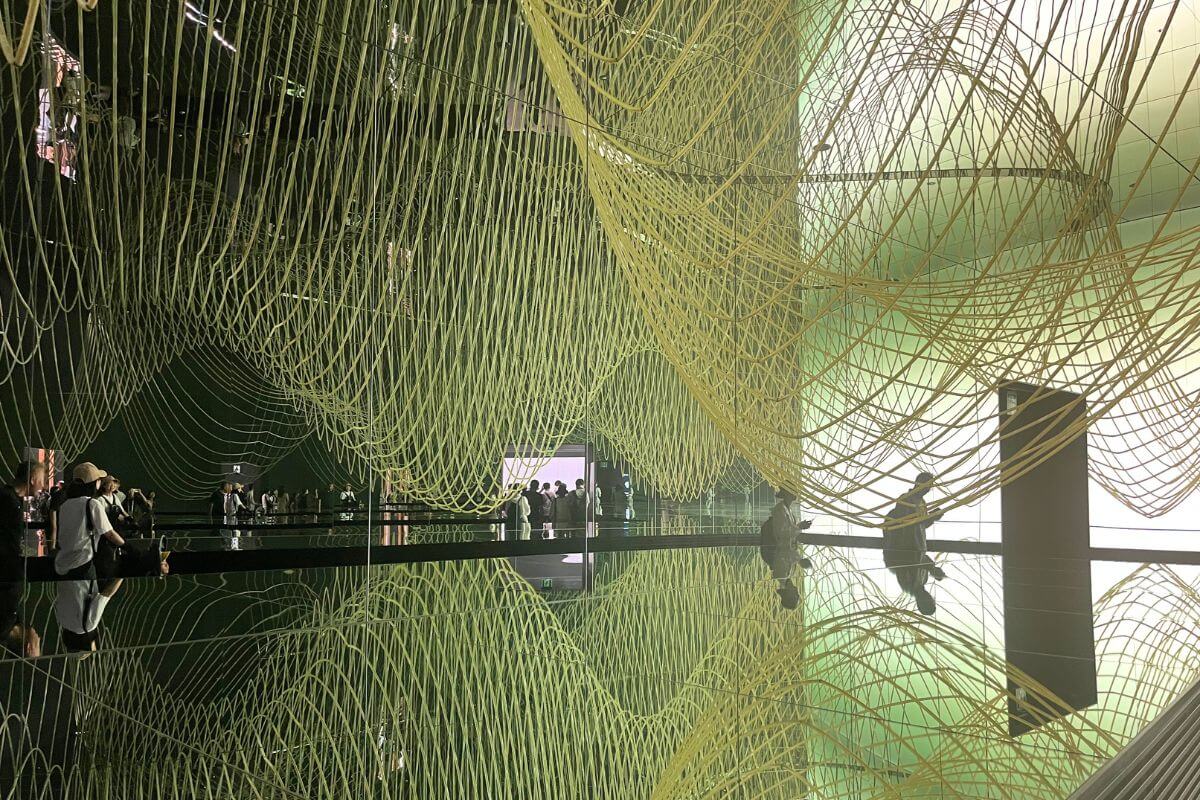
And there are green tubes where spirulina, an algae known as a superfood, is grown. You can enjoy a fantastical space where you can feel the brilliance of the algae’s life.
Factory Area : From materials to products
The final area is the Factory Area, where visitors can see another facet of the Japan Pavilion: the manufacturing factory. Here, visitors can see how stools are made using two robotic arms and a 3D printer from plant-based bioplastics that are mixed with the algae “Spirulina,” which was also introduced in the Farm Area.
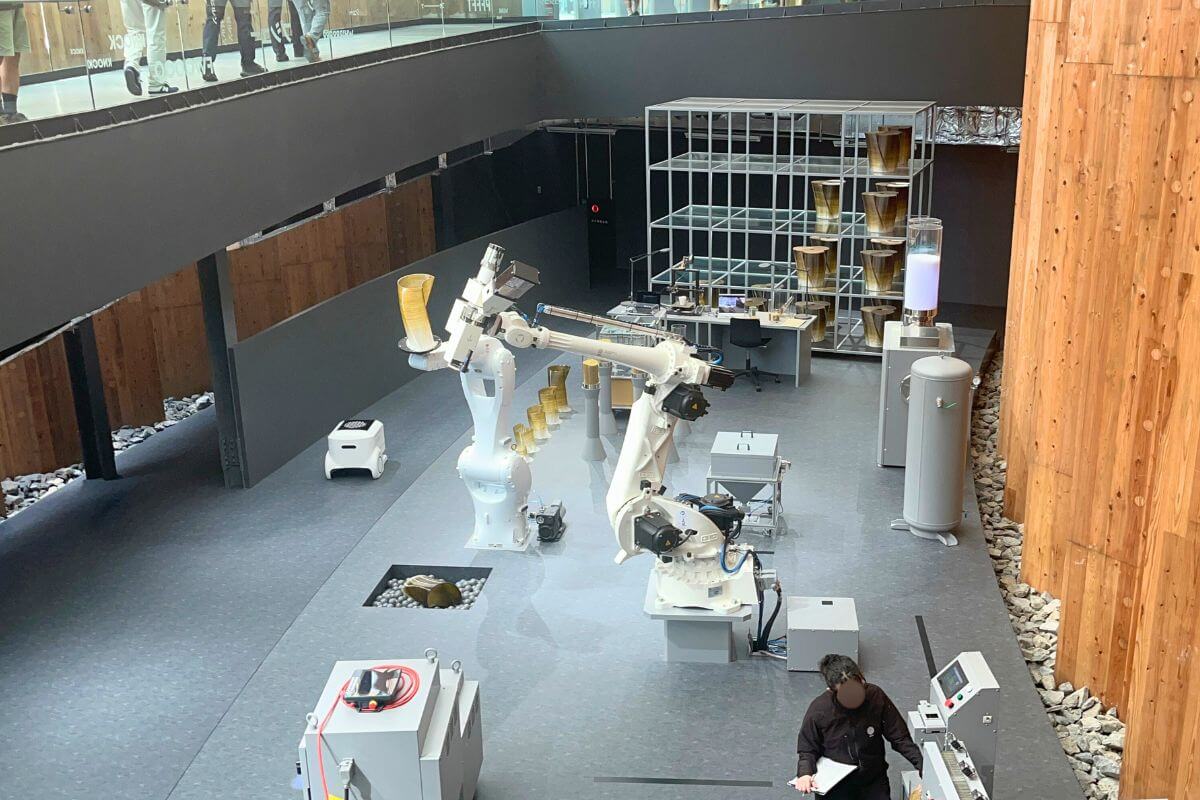
This stool has a beautiful green gradation that evokes the vitality of algae. It is actually used in the Japan Pavilion and is sturdy enough to support one adult.
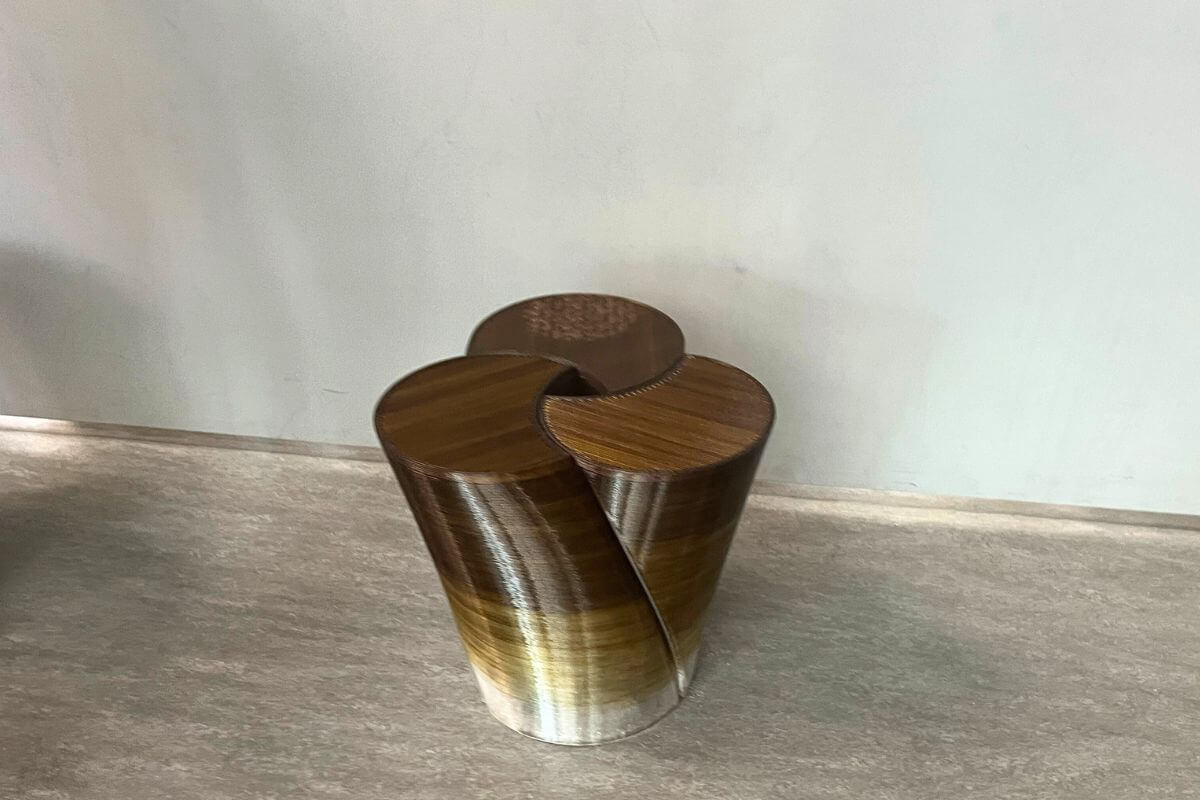
Environmentally friendly plant-based “materials” are transformed into all kinds of “products.” Seeing the manufacturing process strengthened my desire for us as consumers to contribute to environmental conservation as part of the resource recycling cycle by choosing environmentally friendly “products.”
The next booth displays products and technologies born from Japan’s traditional “recycling-oriented manufacturing culture” based on the concept of “making soft things.”
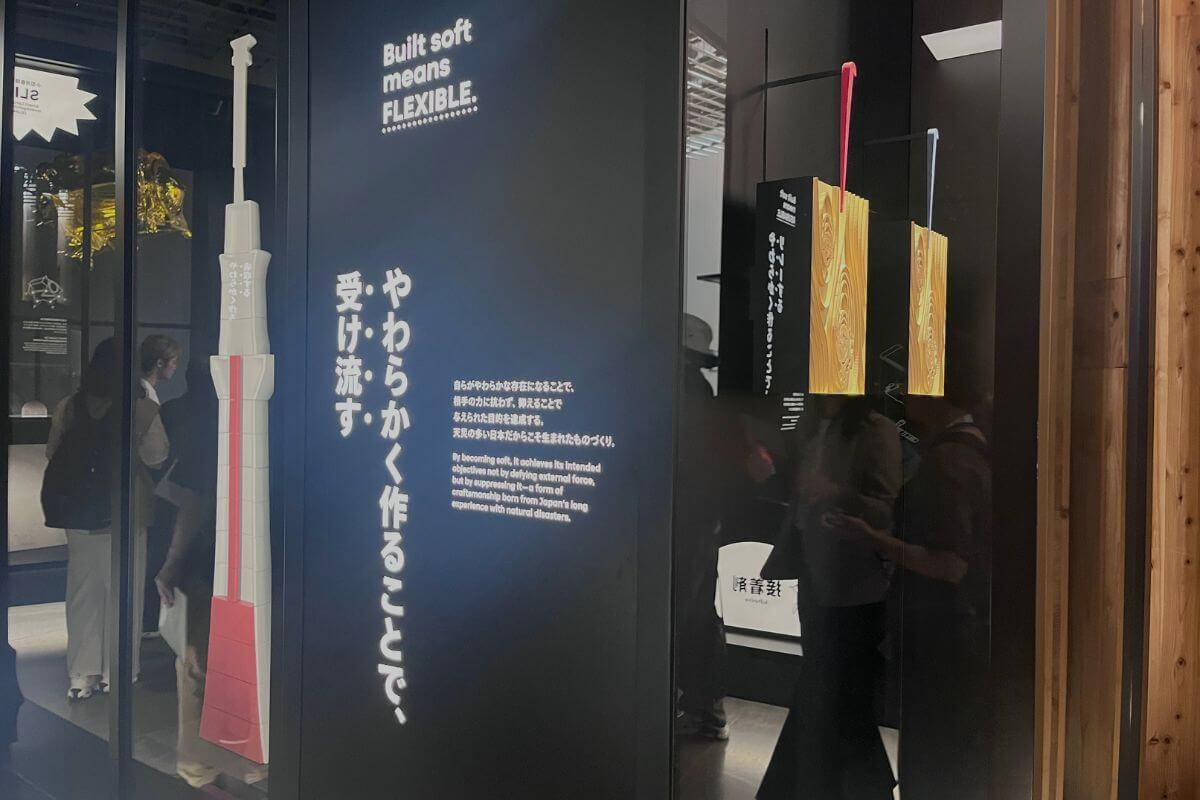
For example, traditional Japanese nails and the central pillar of Tokyo Skytree were introduced as examples of techniques to prevent breakage by making them flexible. Because Japanese nails are made of soft iron, they bend when they hit a knot in hard wood, preventing them from breaking or becoming stuck.
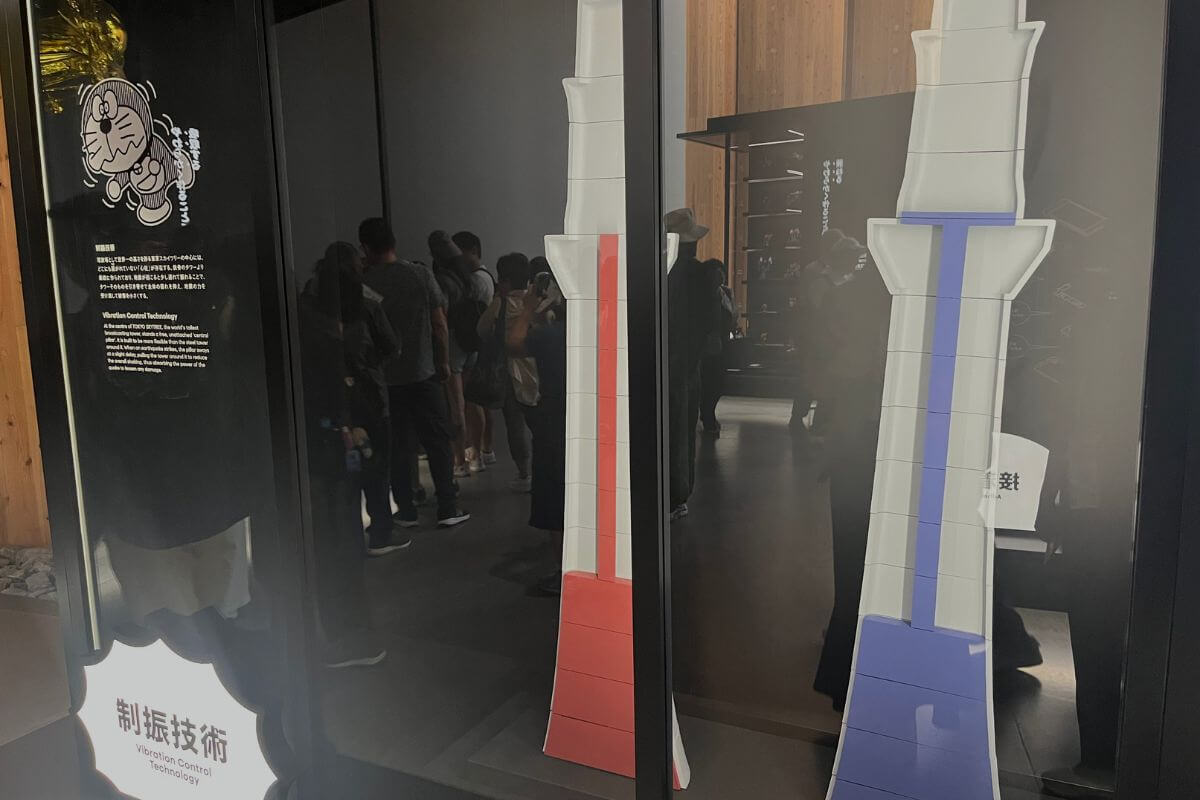
On the other hand, Tokyo Skytree has a central pillar called the “shinbashira,” which is not connected to anything else and sways in the opposite direction to the building during an earthquake, helping to reduce the overall shaking.
I was surprised to see how this traditional Japanese ingenuity, of building something flexible to absorb force, is being used in such cutting-edge architectural technology.
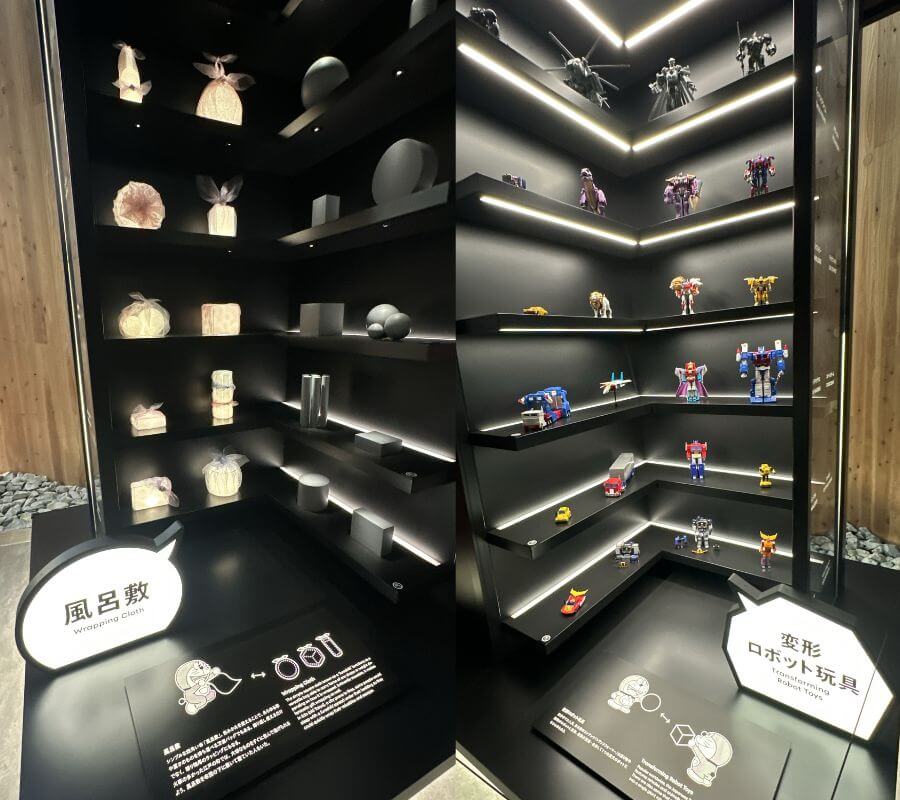
There are also other versatile items that can be used for multiple purposes. A variety of uniquely Japanese technologies are on display, including “furoshiki” wrapping cloths, which were born from a uniquely Japanese concept, and “transforming robot toys” such as Transformers.
What’s more, the navigator, Doraemon, is very cute and soothing. He gives easy-to-understand explanations of each exhibit, so be sure to take your time to look around.
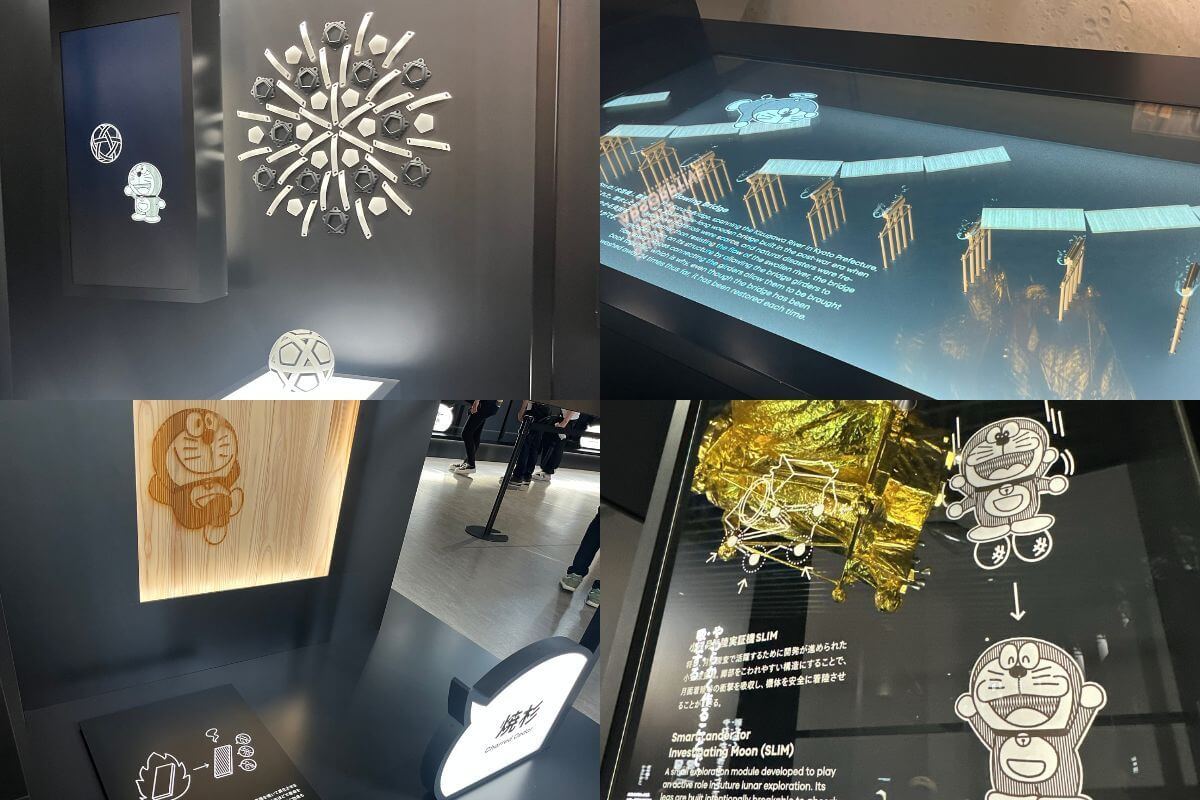
▲Doraemon navigating each exhibit
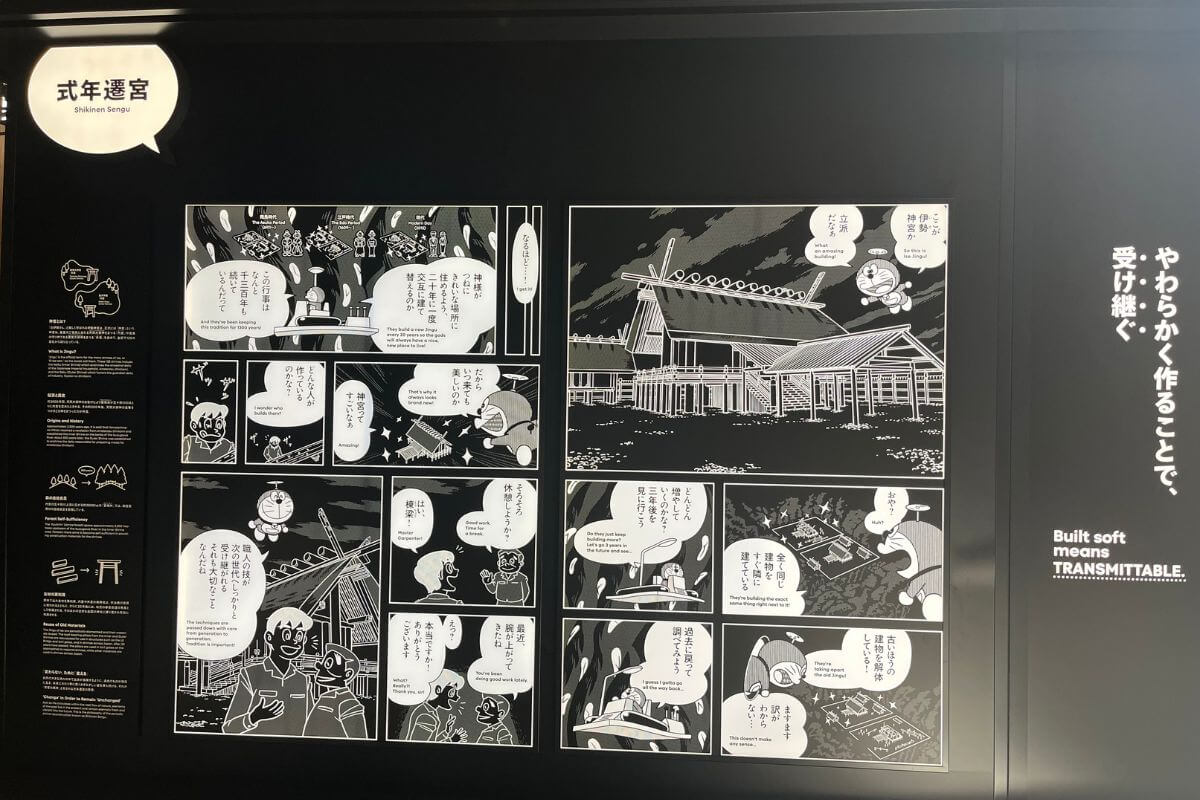
▲Introducing the Ise Jingu ‘s Shikinen Sengu in manga format
Souvenirs can also be purchased at the official Japan Pavilion shop
After viewing the exhibits in the Factory Area, you can enjoy some shopping at the Japan Pavilion’s official shop.
There are many limited-edition items that can only be purchased here, including original goods related to “BE@RBRICK,” “Hello Kitty,” and “Doraemon,” which were featured in the Japan Pavilion.
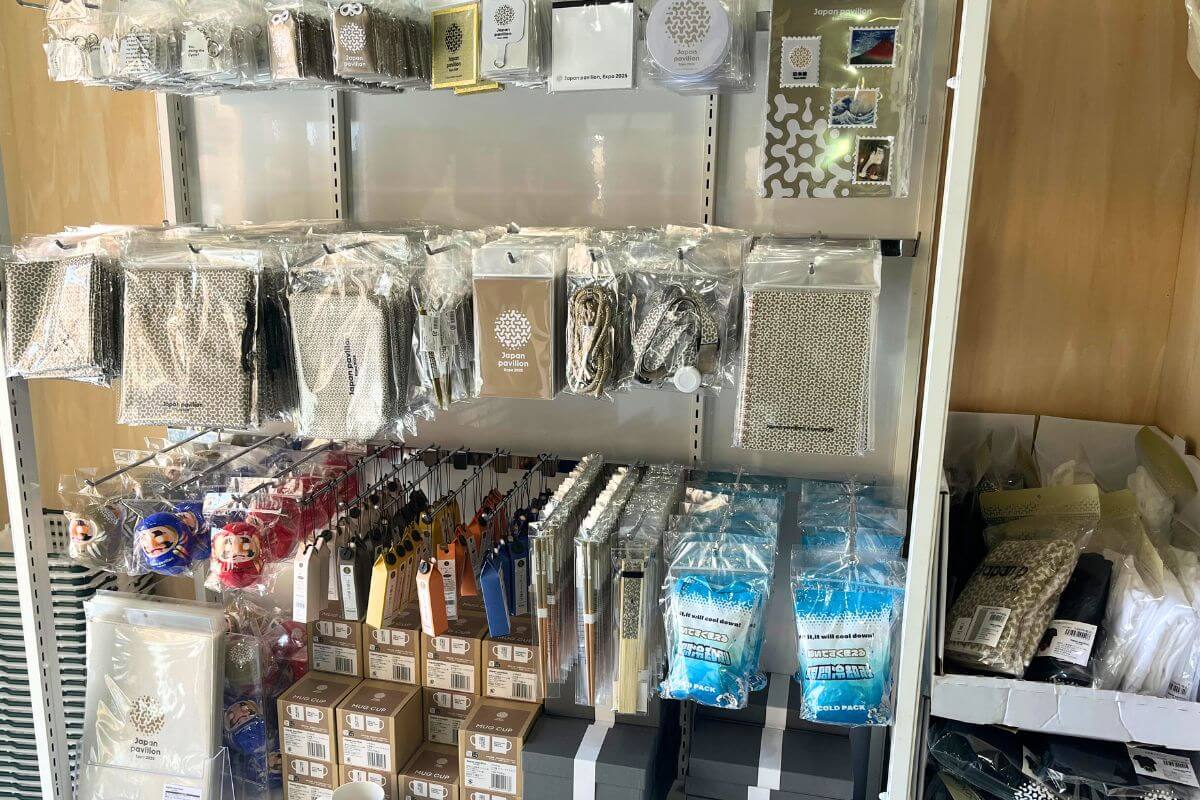

©Fujiko-Pro
▲Doraemon Plush Toy
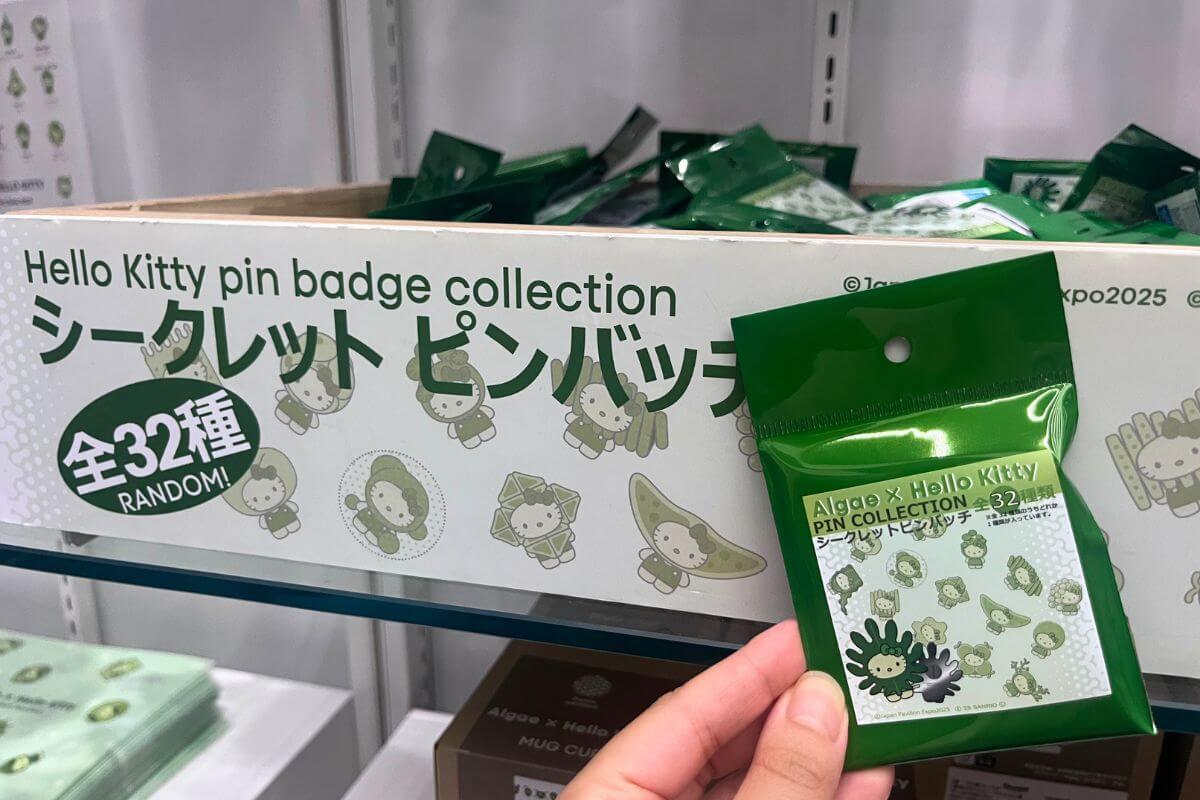
▲Hello Kitty 32 types of secret pin badges
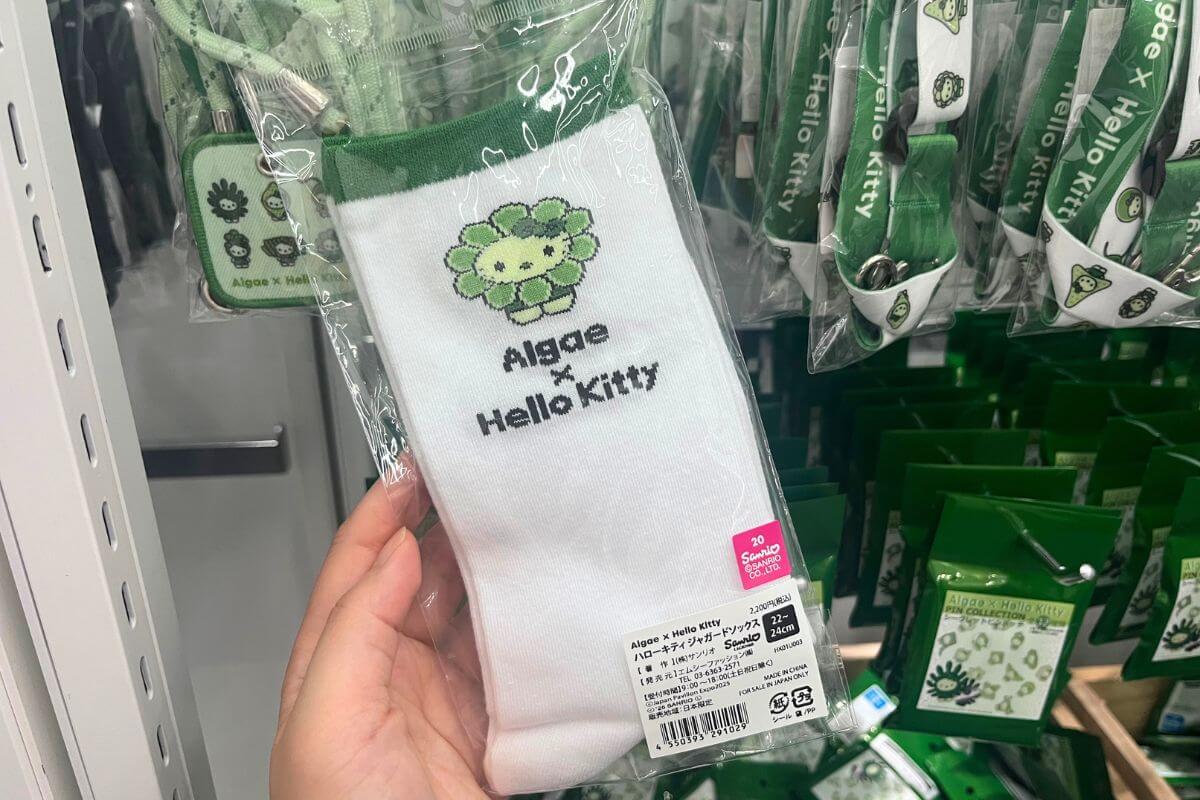
▲Hello Kitty Jacquard Socks
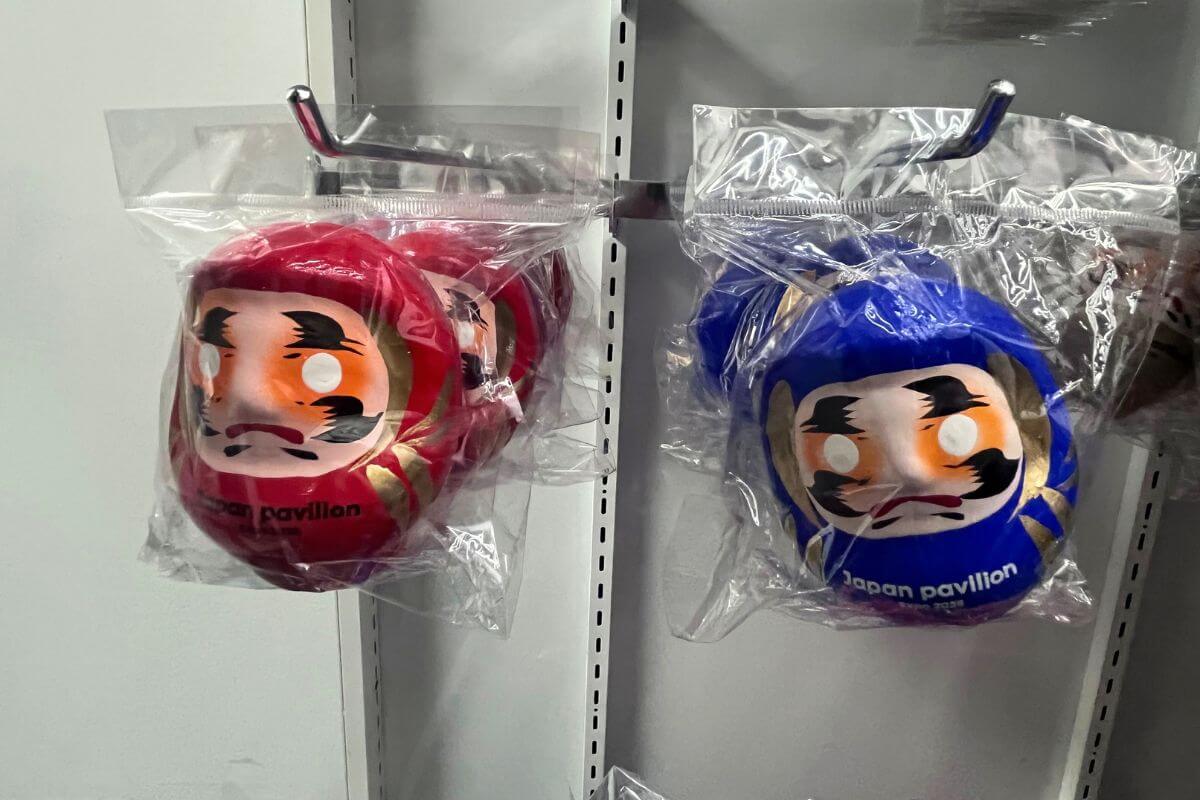
▲Japanese Pavilion Mamedaruma
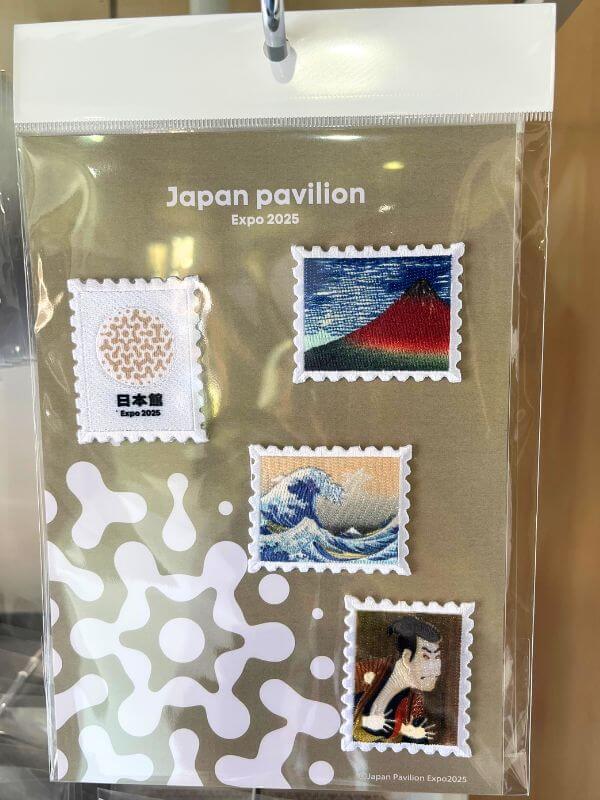
▲Japan Pavilion Stamp-Shaped Sticker Set
The official Japan Pavilion shop is located in two places, one inside the pavilion and one outside, so be sure to pick up some souvenirs to commemorate your visit to the Japan Pavilion.
Now, let’s go to the Japan Pavilion!
The Japan Pavilion, with its recycling-focused theme, offers a clear and concrete answer to the Expo’s theme, “Designing Future Society for Our Lives.” Its clear message conveys the host country’s enthusiasm and the significance of its participation in the Expo.
By carefully examining each exhibit, you can appreciate the depth of the Japan Pavilion, so we recommend checking out the Japan Pavilion Complete Guide beforehand.
▼Japan Pavilion Complete Guide
https://2025-japan-pavilion.go.jp/en/guide/
Visit the Japan Pavilion to learn about Japan’s unique recycling-oriented initiatives and contemplate a future society for life.
▼Click here for Expo2025-related articles




